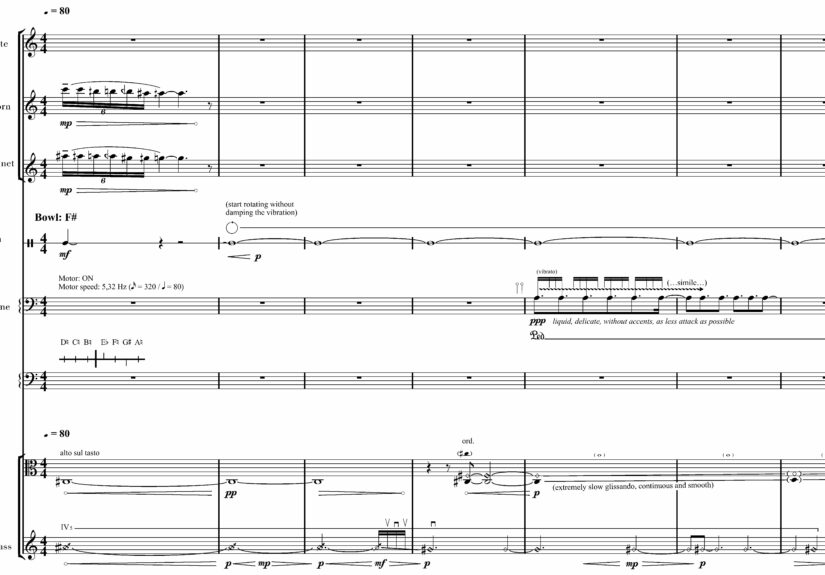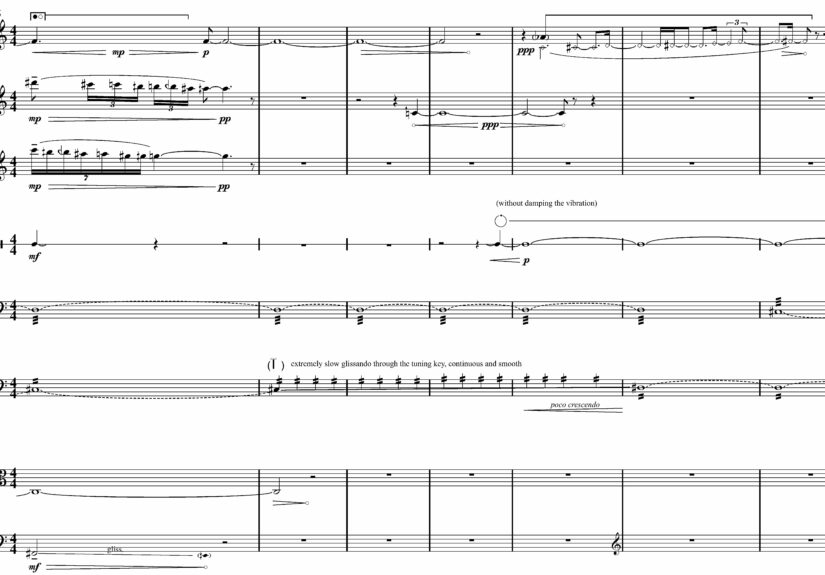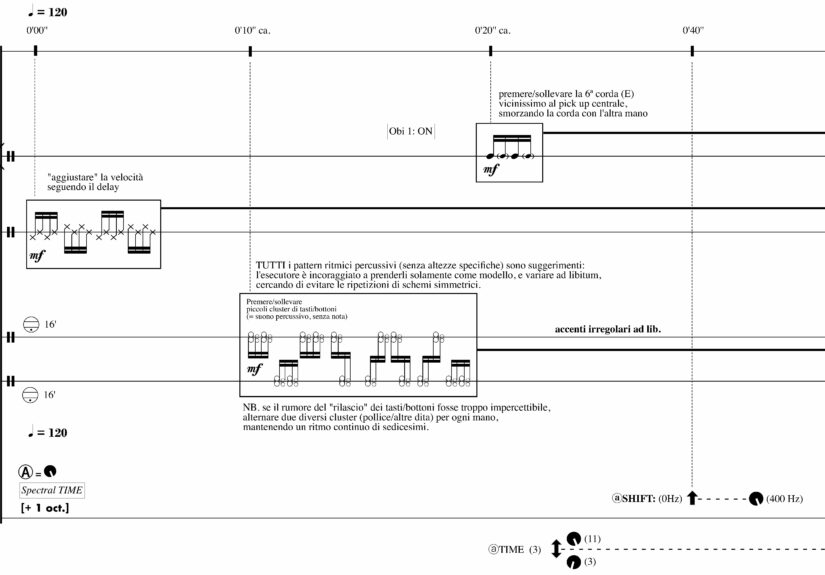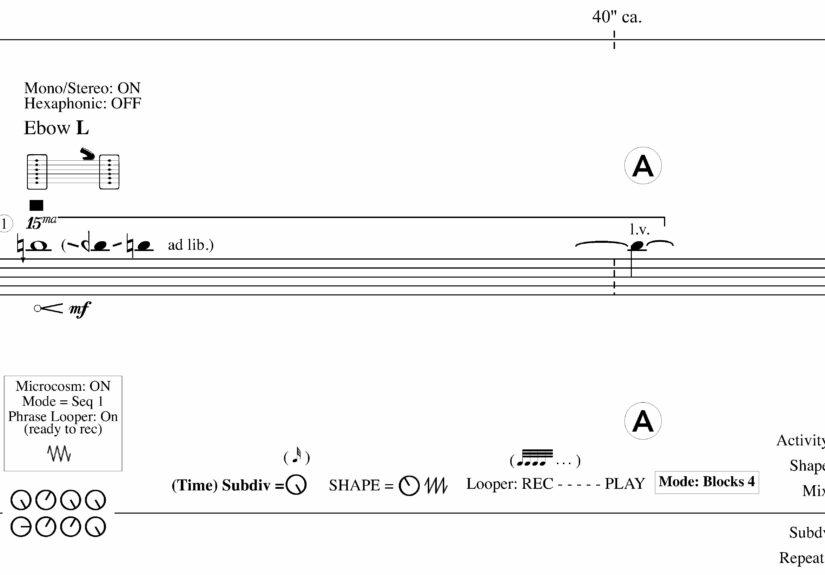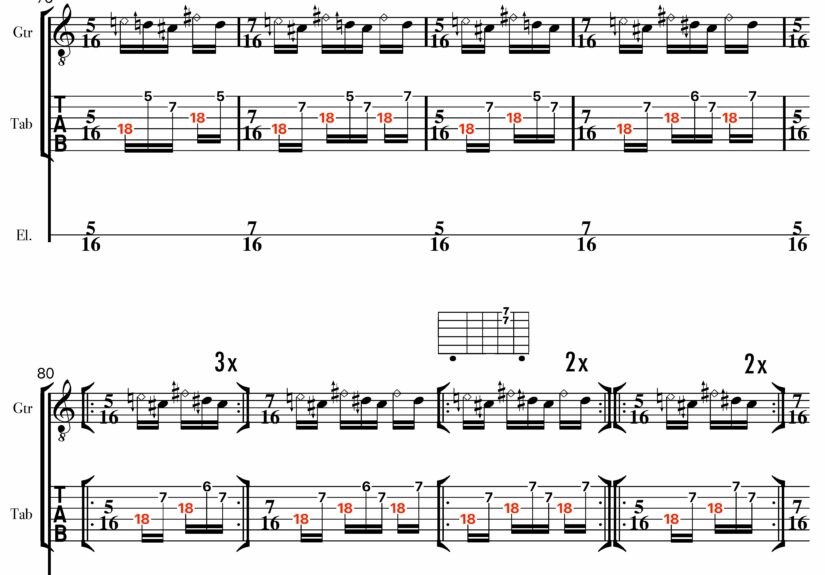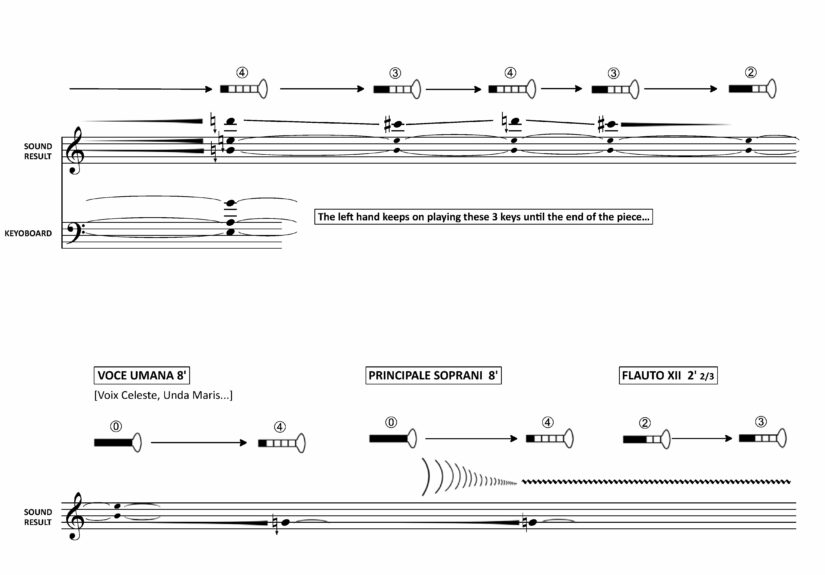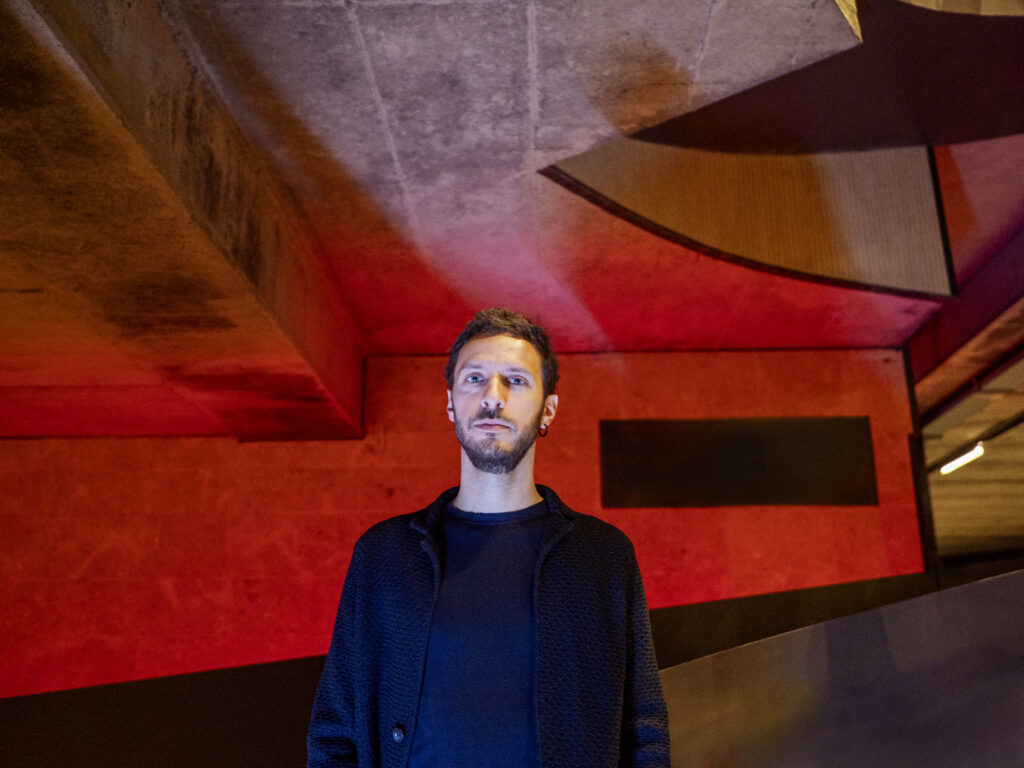
Zeno Baldi (*1988) is a composer and sound artist with an extremely refined and distinctive sonic language, shaped by his multiple musical influences.
His works have been performed at numerous international festivals such as Mata (New York, US), London Ear Festival (UK), Unerhörte Musik (Berlin), ArteScienza (Rome), TransArt (Bolzano), Open Music (Graz), Loop (Brussels), and by renowned ensembles including Divertimento, Linea, Mdi, Zeitfluss, Schallfeld, L’arsenale, Ex Novo, Quartetto Maurice, Azione_Improvvisa, Yarn/Wire, OPV Orchestra, and the Orchestra of Teatro La Fenice.
In addition to his compositional work, he alternates as an electroacoustic performer, exploring different instrumental setups in his Solo sets: from analog synths to piezoelectric microphones, from solenoids to analog pedals.
In this interview, we will focus on his works for guitar, delving into some of the most relevant aesthetic and musical themes in the creative journey of the composer from Verona.
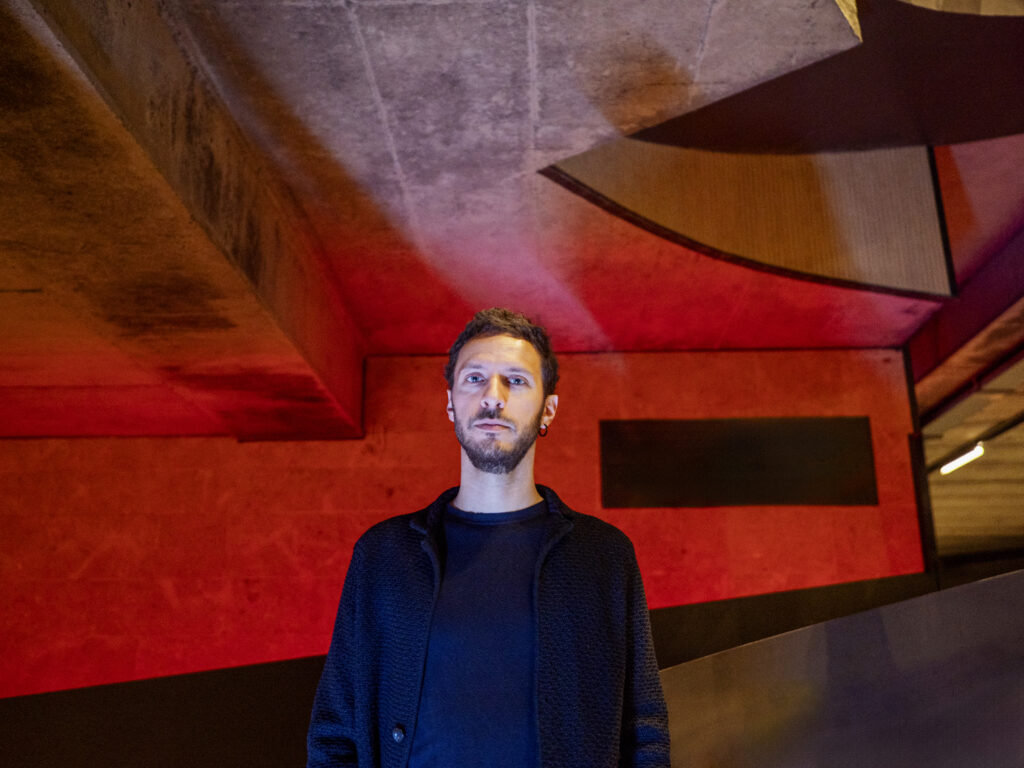
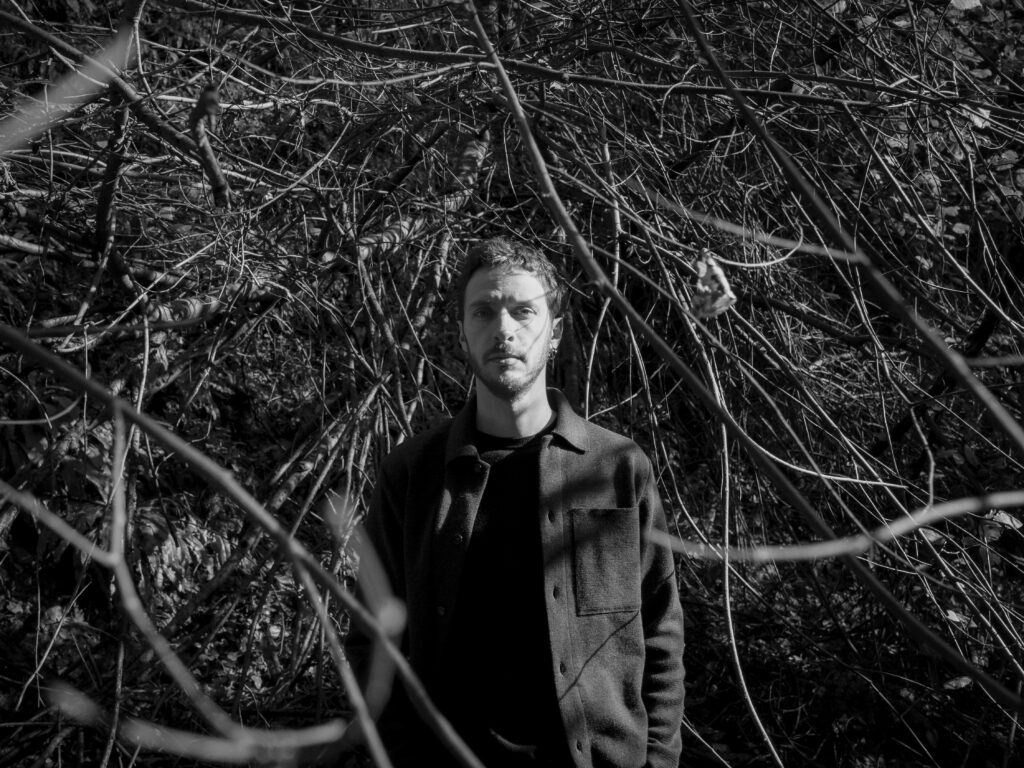
Hi Zeno, and thank you for being with us today.
Composer, performer, and electroacoustic improviser. How do these different musical identities of yours intertwine and influence each other?
Hi, and thank you for the invitation.
Well, in 2017, my friend, the composer Michael Cutting (who is now mainly active in the Hyperdawn project), and I shared a particular interest and curiosity for computer-free electronics (“look mum, no computer!”). Knowing that at that time I was experimenting with chained pedals and a semi-analog synth, he invited me to play an opening set for the launch of his debut EP, where he mainly used reel-to-reel tape recorders, at the Legroom cultural center in Manchester. That’s how, somewhat by chance, this parallel path (or rather, most of the time, transversal) to my composition work started.
In the early years, I performed very rarely, always solo, continuously changing instruments and setups for each concert, using those occasions as a lab to test new technical solutions, new ideas, and new durations (!) for the electroacoustic pieces I would later write.
Then, gradually, the reverse also happened: while writing pieces for other musicians, I developed specific playing techniques (for example, controlling the pitch of feedback produced on cymbals and membranes) and felt the need for freer, partially improvisational exploration. This led to collaborations with other musicians (e.g., with Duo Dubois or Ljuba Bergamelli).
I’m glad you chose the verb “intertwine”: I indeed think that in my music, the intertwining happens on multiple levels, from the listening and influences to the tangled audio-MIDI signal routing, through which I’ve been trying for some years to create hyper-instruments, played with multiple hands.
Let’s start with your latest work: the new solo piece for electric guitar premiered a few weeks ago.
Can you tell us about the genesis of this piece and the ideas that inspired it?
Opal is written for François Couvreur (guitarist and artistic director of Ensemble Hopper), commissioned by the Centre Henri Pousseur (a Belgian institute for electronic music), and was premiered at the Festival Images Sonores in May 2024.
From the outset, I wanted to explore new microtonal possibilities on the guitar—both melodic and harmonic—and how they resonate with certain frequencies coming from the electronics or the performance space itself.
On a purely guitaristic level, the discovery of Lenny Breau was crucial, particularly his almost impressionistic use of timbral alternation between natural/artificial harmonics and open/fingered strings.
The study and research phase led to the decision to use a guitar with a partially quarter-tone fretboard, and the development (by Patrick Delges of the Centre Henri Pousseur) of specific tools/effects for live electronics.
The title refers to precious stones whose color changes depending on the angle of observation, revealing iridescent rainbow-like hues; they can be transparent, translucent, or opaque, and the base color can be white, black, or nearly any color in the visible spectrum. Some of these qualities, along with more general phenomena like interference and diffraction (of light, of sound), were important guiding concepts in the creation of this piece.
I know that creating this piece involved careful research in terms of sound spatialization and diffusion, and you even had a custom pickup made.
Yes, in my recent works, I’ve tried to pay closer attention to how sound is diffused in space, and in this case, I was able to incorporate more ambitious technical solutions thanks to the financial and production support from the Centre Henri Pousseur. Following the path set by composer Christopher Trapani, I asked Paul Rubenstein (aka Ubertar, a musician and inventor from the U.S.) to create a custom hexaphonic pickup for our microtonal guitar.
With the help of luthier Pietro Furlattini, I then calibrated this Frankenstein-guitar by combining the hexaphonic pickup with the native P90. The hexaphonic system allows for the separation, individual manipulation, and spatialization of the six strings, which are “divided and reassembled” by the live electronics into a new instrument diffused through an 8.1 sound system.
In the piece Licheni, written for Azione_Improvvisa, you explored electric guitar sounds that, while remaining idiomatic, deviate from the tradition and common imagery of the instrument. Is this a conscious goal in your instrumental research, almost like a “new lutherie,” or does it emerge spontaneously from your musical aesthetics?
I’m not sure I can answer with certainty, maybe both. In general, I’m quite intolerant of excessive rhetoric and clichés, not only in music. I’m not obsessed with the idea of inventing sounds or techniques that have “never been used before.” I care more about avoiding automatisms and trends, and finding solutions that truly reflect who I am.
Speaking specifically about the electric guitar, I have a hard time digesting the transposition of distinctly rock sounds (and instrumental gestures) into contemporary music, even in composers I love, like Romitelli. Moreover, for me, it’s inconceivable to write a piece for electric guitar without having clearly defined the “clean” sound of the instrument, and the same goes for effects, even the most common ones: I can’t conceive of using a generic distortion or reverb (etc.) without knowing exactly which ones I have at my disposal.
You have used the electric guitar in various contexts: ensemble, solo, long pieces, and miniatures. Do you think there is still room for further instrumental exploration? What new sonic horizons would you like to explore?
Absolutely yes, I believe there are still many research horizons to pursue.
I’d like to delve deeper into microtonal exploration and the signal separation through the hexaphonic pickup, potentially utilizing it in different ways from those used in Opal. I’d also like to revisit some research, just barely outlined, on string sets with more or less uniform thickness (similar to the chitarra battente), which would allow for unconventional tuning and fingering systems. But there are many other areas I’d like to work on…
Delving into a specific instrument (and instrumentation in a broader sense) allows for discovering new expressive possibilities. However, on the other hand, it might make the dissemination of the music more complex. How do you deal with this dichotomy?
The problem mainly arises when there are many components created specifically for a particular project, making them difficult to replicate by performers other than the dedicatees.
In many ways, it would be easier and more logical to write for traditional ensembles, avoiding instruments (both hardware and software) that are hard to come by. However, I must admit that, in my case, some of the best results and most positive (as well as fun and adventurous) experiences have come from putting this aspect/problem in the background. As much as possible, I always try to gather the necessary material, perhaps purchasing it over time, so I can send any missing parts to the performers.
Can you give us a preview of your upcoming projects? Are you planning new compositions for electric guitar or other instruments?
If all goes well, in 2025, I’ll be working on a collective project with guitarist Ruben Mattia Santorsa, the trio Neko3, and composer Giulia Lorusso for a large-scale electroacoustic project, which will also involve light design.
On the guitar side, I’m looking forward to working directly with Ruben Mattia to figure out the direction to take, though I will likely be testing a new hexaphonic pickup that can be mounted and dismounted without invasive operations on the guitar.
In addition to this, after these past few “chamber music” years, I’d love to take on a large ensemble (or better yet, a full orchestra), so I hope that opportunity comes soon.
